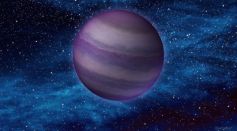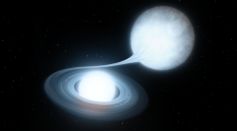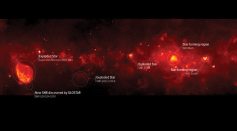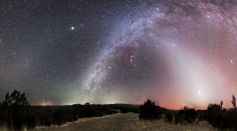Tags: Milky Way

NASA Chandra X-Ray Observatory Telescope Finds Signs of First Planet Found Outside Milky Way
Giant Magnetic Tunnel Within Solar System: This Mystery Item 'Covers' Earth, Other Stars in Milky Way Galaxy
'Mysterious' Radio Signals Near Galactic Center Detected By Scientists; What Is It Trying To Say?
Is There a 500 Light-Years Wide Giant Hole in Milky Way? Here's What Astronomers Found

Milky Way Galaxy Origin Solved? Brown Dwarf 'The Accident' Missing Link Between Planets and Stars May Have the Answer
Milky Way is Indeed a Messier Object After All; Scientists Claim This Galaxy Isn't Homogeneous
How Black Holes Form: New Simulation Video Shows How Galaxies Feed Supermassive Mouths
Cold Planets Like Jupiter and Neptune Exist in Milky Way's Galactic Bulge; Here's What It Means
Wandering Rogue Black Holes in Milky Way Galaxy Are More Common Than Previously Thought
Supercomputer Tracks Chaotic Young Galaxies As They Mature Into Orderly Forms, New Simulation Shows

Did NASA Just Find Milky Way’s Broken Arm? Scientists Claim Seeing a Cluster of Nebulae, Young Stars in the Galaxy
Biggest Curl of Gas in Space Discovery Baffles Scientists As to What Exactly Is This Structure in the Milky Way

This Supernova Shrapnel Star Is Running Away From The Galaxy, 2M Miles an Hour
Star Moving at Lighting Speed Spotted; Scientists Say It's So Fast That It Nearly Leaves the Galaxy at 2 Million Miles an Hour

Previously Unseen Star Formation in Milky Way Detected in New Study
Is the Milky Way Sending Earth A Message? Scientists Now Close to Uncovering This Strange Signal
Are Black Holes Slowly Taking Over Star Cluster Palomar 5 Orbiting Milky Way Galaxy?

Galaxy's ‘No-Man’s Land’: Orphan Cloud Larger Than Milky Way Itself Discovered in Deep Space

Skywatching Venus, Milky Way: NASA Shares 2 Exciting Tips to Have the Best Glimpse
Where Stars Are Born: NASA's SOFIA Telescope Captures High-Resolution View of a Star Nursery in the Milky Way
Most Popular

Coral Bleaching Crisis: How Ocean Warming Threatens Marine Ecosystems Worldwide

Can EV Batteries Be Recycled? How Lithium Recovery Supports Sustainable Batteries

NASA Aurora Research Reveals How ESA Space Weather Teams Use Satellite Aurora Imaging and Ground Sensors

V2G Technology: How EV Energy Storage Utilizes Smart Grid and Renewable Energy Integration




